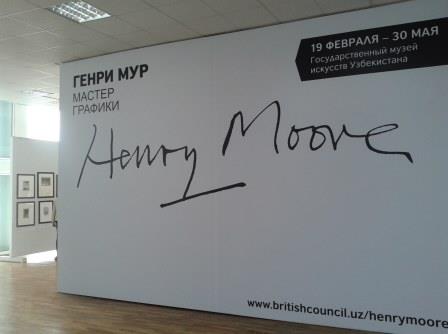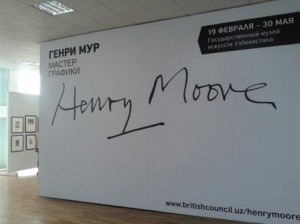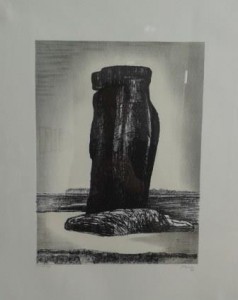29th May 2015 Tashkent, Uzbekistan
Henry Moore

 On Wednesday I attended a closing ceremony for the exhibition of graphic works by Henry Moore at the State Museum of Arts. Moore was one of the greatest British artists of the twentieth century. He is best known for his sculpture, much of it on a monumental scale and semi-abstract, but with a deep sense of humanity. But his preoccupations and his artistic vision also show very clearly in the works that were shown in this exhibition. I was especially impressed by the series of pictures of Stonehenge, and the pictures of parts of an elephants’ skull, both sets with a compelling physicality in their portrayal of natural or semi-natural forms. Over the three months it ran, the exhibition was visited by more than 11,000 people.
On Wednesday I attended a closing ceremony for the exhibition of graphic works by Henry Moore at the State Museum of Arts. Moore was one of the greatest British artists of the twentieth century. He is best known for his sculpture, much of it on a monumental scale and semi-abstract, but with a deep sense of humanity. But his preoccupations and his artistic vision also show very clearly in the works that were shown in this exhibition. I was especially impressed by the series of pictures of Stonehenge, and the pictures of parts of an elephants’ skull, both sets with a compelling physicality in their portrayal of natural or semi-natural forms. Over the three months it ran, the exhibition was visited by more than 11,000 people.
 The works are part of the collection of the British Council, who organised the exhibition in co-operation with the Ministry of Culture and Sport, the Academy of Arts of Uzbekistan, and the State Museum of Arts of Uzbekistan. They also organised a number of associated events, including master classes for art students, the results of which have also been on display at the Museum. It’s fascinating to see the response of Uzbek artists to Moore’s very individual style and thematic interests.
The works are part of the collection of the British Council, who organised the exhibition in co-operation with the Ministry of Culture and Sport, the Academy of Arts of Uzbekistan, and the State Museum of Arts of Uzbekistan. They also organised a number of associated events, including master classes for art students, the results of which have also been on display at the Museum. It’s fascinating to see the response of Uzbek artists to Moore’s very individual style and thematic interests.
Relations between the UK and Uzbekistan are not just a matter of political contacts, or of supporting the growth of commercial and investment links – important though those two areas are. I’m pleased that we’re seeing the growth of connections across a wide area including academic and educational links, co-operative work between the scientists of our two countries, a growing interest in tourism in both directions and – as exemplified by this exhibition – cultural exchanges. In the past couple of years we’ve seen artefacts from pre-Timurid Samarkand on display at the School of Oriental and African Studies in London, and an increasing number of contemporary artists from Uzbekistan showing their work in major London galleries. We’ve seen top Uzbek musicians working in the UK, and British musicians performing at festivals in Uzbekistan. And we’ve seen active co-operation between theatre companies here and in Britain. I look forward to seeing increasing contacts in all these areas.